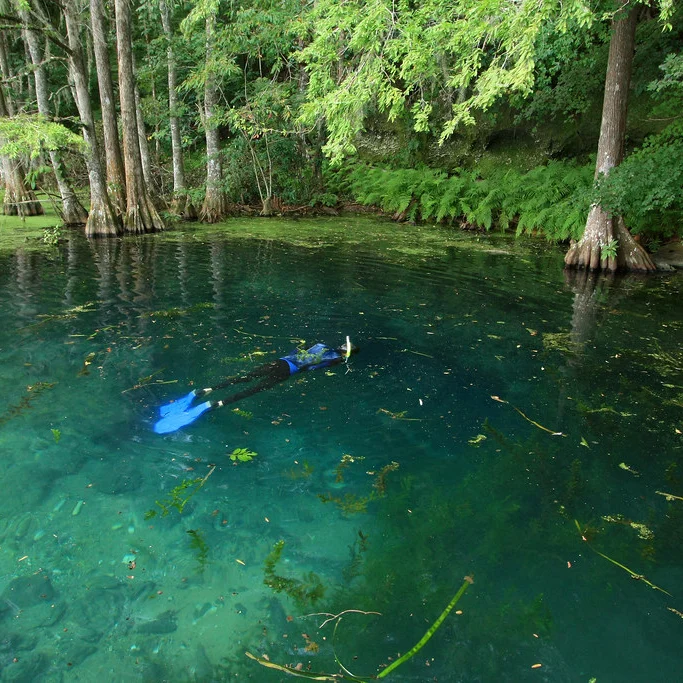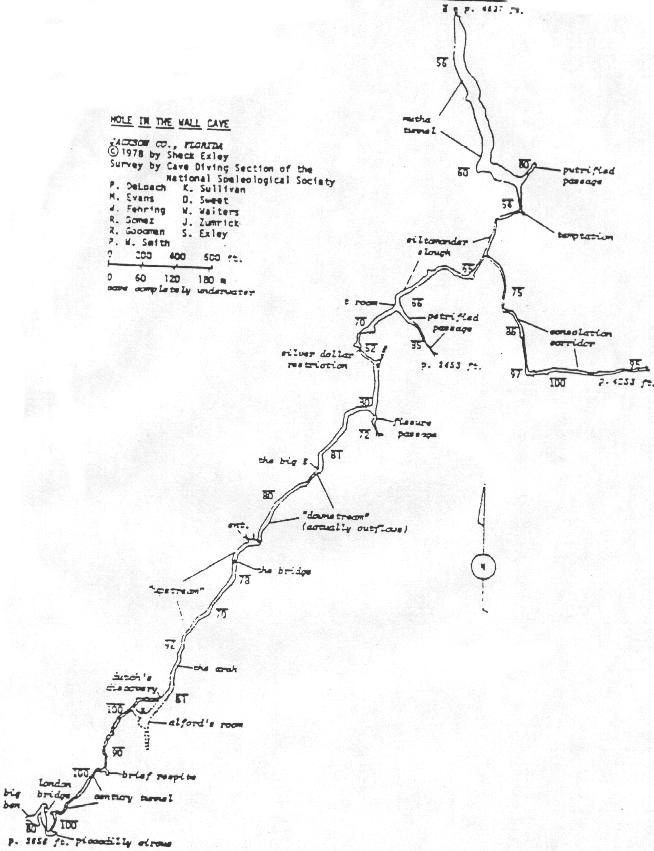Clyde Rorex’s Fatal Air Loss at Hole in the Wall Cave Uncovered


| Incident Location | Diver Full Name |
|---|---|
| USA, Marianna, Florida, Hole in the Wall Cave | Clyde Douglas (Doug) Rorex |
A Routine Dive in a Familiar Cave
On June 9, 2020, Clyde Douglas “Doug” Rorex, a 68-year-old highly experienced cave diver, undertook what many would consider a routine solo dive in Hole in the Wall Cave, located at Merritts Mill Pond in Marianna, Florida. Known among local divers for his extensive knowledge of the region’s underwater cave systems, Rorex was comfortable with the cave and frequently dove there using his side-mount diving configuration.
Side-mount diving allows divers to carry tanks mounted on their sides rather than on their backs, offering flexibility in tight spaces common in caves. Rorex’s experience and equipment made him well-prepared for the challenges posed by the cave’s unique structure.
When Time Passed Without Return
The dive was expected to last a certain amount of time, but when Rorex did not return as planned, concerns grew. A local dive shop owner and skilled cave rescuer, Edd Sorenson, was contacted to assist in the search. Sorenson was a trusted figure in the cave diving community, known for numerous successful rescues and recoveries in the area. He quickly mobilized to find Rorex.
Sorenson entered the cave and soon located Rorex deceased near the entrance, at the bottom of a vertical chimney roughly 85 feet deep. Despite the tragic outcome, finding Rorex so close to the cave entrance was somewhat fortunate, as deeper locations would have made recovery more difficult.
The Unique Environment of Hole in the Wall Cave
Hole in the Wall Cave is named for its distinctive entry point—a literal hole in the pond’s stone wall. Upon entry, divers must swim nearly straight down about 85 feet before reaching the cave floor. From this point, divers can choose one of two directions to explore the cave’s underwater passages.
Rorex was found exactly at the bottom of this chimney, one regulator still in his mouth, both of his diving cylinders completely empty. An inspection of his gear later confirmed everything was functioning correctly. This indicated that no equipment failure contributed to the tragedy.
Dive Time and Gas Usage: A Strange Discrepancy
The data recorded by Rorex’s dive computer showed a total dive time of only 45 minutes. For an experienced cave diver at that depth, with properly functioning diving tanks, this was unusual. Normally, the amount of gas he carried would allow for nearly twice that time underwater, assuming a normal breathing rate and no extraordinary exertion.
This discrepancy suggested that something out of the ordinary happened during the dive — something that caused Rorex to use air at an unusually rapid rate.
Dive Profile Analysis: Signs of Possible Entrapment
A dive computer profile typically shows a symmetrical pattern of depth changes during a dive if the diver exits the cave on the same path they entered. Analysis of Rorex’s dive profile revealed that he remained at a constant depth for approximately 11 to 12 minutes before beginning his ascent.
This prolonged stop at a fixed depth could indicate that Rorex was engaged in some activity or possibly trapped at that location. Entrapment underwater can lead to panic and increased physical effort, which in turn causes a diver to breathe more heavily and consume gas faster than planned.
Searching for Evidence of Struggle
To investigate the entrapment theory, Edd Sorenson conducted a thorough search the day after the incident, focusing on the most likely areas where Rorex might have become stuck. Hole in the Wall Cave is known for its calm water flow, meaning any disturbance—such as kicked-up silt or broken equipment—would remain visible for a considerable time.
Despite careful examination, Sorenson found no signs of silt clouds or damage to the cave floor, which might have suggested a struggle or entanglement. The absence of such evidence left questions about what exactly caused the unusual gas consumption.
Equipment Functioning Normally
The fact that all of Rorex’s equipment was tested and found to be fully operational ruled out a mechanical failure as a cause of the accident. Both cylinders were empty, but they had contained breathing gas until the very end of the dive.
Rorex was still wearing his regulator when he was found, meaning he had access to breathing gas right up to the point of his death. This suggests that he ran out of air and drowned rather than suffering from equipment malfunction.
The Risk of Gas Management in Cave Diving
Cave diving is inherently risky and demands careful gas management. Divers must constantly monitor their air supply and plan their dives to ensure they have enough gas for the return journey. Even small miscalculations can lead to fatal consequences, as demonstrated by Rorex’s dive.
A diver’s breathing rate can be affected by many factors, including exertion, stress, or panic. If a diver becomes stuck or faces unexpected challenges, their air consumption can increase rapidly, potentially leading to running out of gas earlier than planned.
Unanswered Questions and Lessons Learned
Though Rorex’s death is tragic, it serves as a powerful reminder of the dangers cave divers face, even those with extensive experience and proper equipment. The exact cause of his rapid air loss remains unclear, and without evidence of physical entrapment or equipment failure, the dive profile itself provides the only clues.
This incident highlights the importance of conservative gas planning and the need for divers to be prepared for unexpected situations. It also underscores the value of having rescue experts like Edd Sorenson nearby, who can respond quickly to emergencies in these challenging underwater environments.
The death of Clyde Douglas Rorex at Hole in the Wall Cave is a sober example of how unpredictable cave diving can be. Despite years of experience and thorough preparation, the unexpected can still happen. As divers continue to explore underwater caves, this incident reminds the community of the critical importance of careful dive planning, gas management, and respect for the complexities of cave environments.

